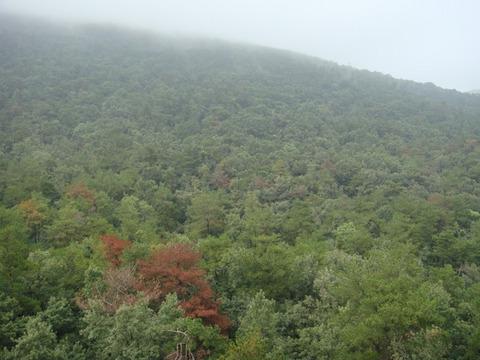当前位置:
X-MOL 学术
›
Funct. Ecol.
›
论文详情
Our official English website, www.x-mol.net, welcomes your
feedback! (Note: you will need to create a separate account there.)
The response of the soil bacterial community and function to forest succession caused by forest disease
Functional Ecology ( IF 4.6 ) Pub Date : 2020-09-24 , DOI: 10.1111/1365-2435.13665 Zhao‐Lei Qu 1 , Bing Liu 1 , Yang Ma 1 , Jie Xu 1 , Hui Sun 1
中文翻译:

森林病害引起的土壤细菌群落和功能对森林演替的响应
更新日期:2020-09-24
Functional Ecology ( IF 4.6 ) Pub Date : 2020-09-24 , DOI: 10.1111/1365-2435.13665 Zhao‐Lei Qu 1 , Bing Liu 1 , Yang Ma 1 , Jie Xu 1 , Hui Sun 1
Affiliation

|
- Forest succession is a key driver of plant communities and understanding succession is central to forest restoration. Currently, the information on the response of the microbial community to the forest succession process, however, is limited. In the present study, we investigated the dynamics of the soil bacterial community in three forest types undergoing succession caused by pine wilt disease, representing the initial pine forest, gradual mixed pine and broadleaved forest, and eventual broadleaved forest, using Illumina MiSeq coupled with Functional Annotation of Prokaryotic Taxa (FAPROTAX) analysis.
- The results showed that the soil pH, contents of soil organic carbon (SOC) and soil total nitrogen (TN) increased after the occurrence of initial succession and differed among the forest sites. The mixed pine forest had significantly higher bacteria biomass (p < 0.05), whereas, the total microbial biomass did not differ during the succession. The bacterial community diversity and richness increased significantly following the succession process (p < 0.05). Proteobacteria, Actinobacteria, Acidobacteria and Bacteroidetes were the dominant phyla across the succession, in which the abundance of Bacteroidetes significantly increased (p < 0.05), whereas, Planctomycetes, WPS‐2 and Burkholder decreased in abundance after succession occurred (p < 0.05).
- The three forests formed distinct bacterial community structures during the succession (p < 0.05), whereas, only two functional structures were clustered, in which the mixed and pure broadleaved forest did not differ. The dominant functional groups involved in the C cycle in the initial pure pine forest were replaced gradually by the groups involved in N and S cycles following the subsequent succession. The soil pH, soil TN and SOC were the most important factors affecting the bacterial community and functional structures during the succession.
- These results indicate that the bacterial community and function shift drastically in the early stages of succession, which reflects the changes in ecological environment caused by succession. The findings provide useful information to better understand the response of microbes to natural forest disturbance and highlight the importance of microbes during forest succession.
中文翻译:

森林病害引起的土壤细菌群落和功能对森林演替的响应
- 森林演替是植物群落的主要驱动力,而了解演替对于森林恢复至关重要。但是,目前有关微生物群落对森林演替过程的反应的信息有限。在本研究中,我们使用Illumina MiSeq结合功能性植被调查了三种由松枯病引起的演替的森林类型中的土壤细菌群落动态,分别代表原始松林,渐进混交松和阔叶林以及最终的阔叶林。原核生物分类注释(FAPROTAX)分析。
- 结果表明,初始演替后土壤pH值,土壤有机碳含量和总氮含量增加,不同林地间土壤pH值,土壤有机碳含量和总氮含量均有差异。混交松林的细菌生物量明显较高(p <0.05),而演替过程中的总微生物量没有差异。在演替过程中,细菌群落的多样性和丰富度显着增加(p <0.05)。细菌,放线菌,酸性杆菌和拟杆菌是整个演替过程中的优势种群,其中拟杆菌的丰度显着增加(p <0.05),而扁平菌,WPS-2和Burkholder发生演替后丰度降低(p <0.05)。
- 这三个森林在演替过程中形成了独特的细菌群落结构(p <0.05),而只有两个功能性结构聚集,其中混合和纯阔叶林没有差异。在最初的纯松林中,参与C循环的主要功能基团被随后的N和S循环所涉及的基团逐渐取代。土壤pH,TN和SOC是演替过程中影响细菌群落和功能结构的最重要因素。
- 这些结果表明,在演替初期细菌群落和功能发生了剧烈变化,反映了演替引起的生态环境的变化。这些发现提供了有用的信息,可以更好地了解微生物对自然森林干扰的反应,并突出微生物在森林演替过程中的重要性。











































 京公网安备 11010802027423号
京公网安备 11010802027423号